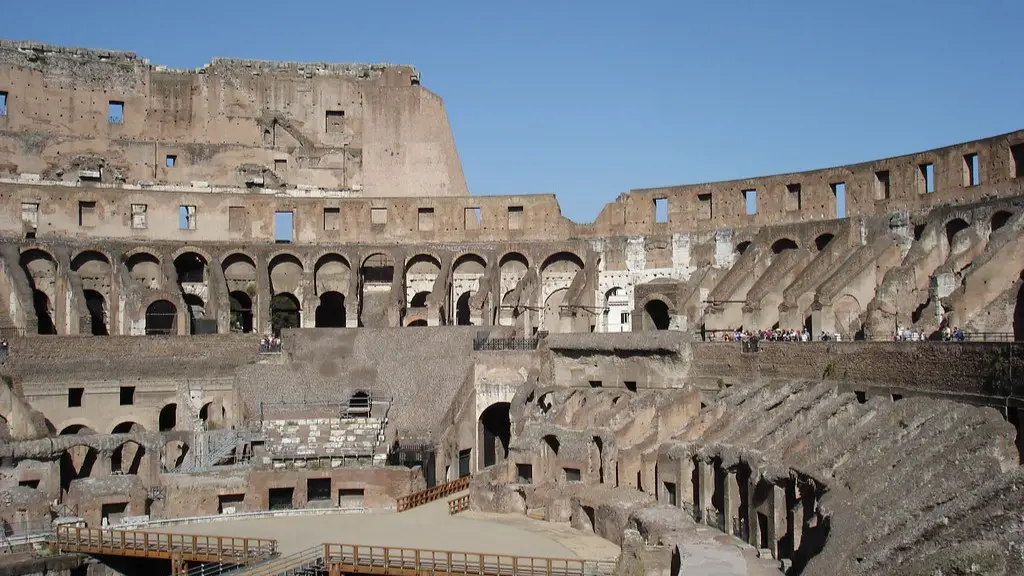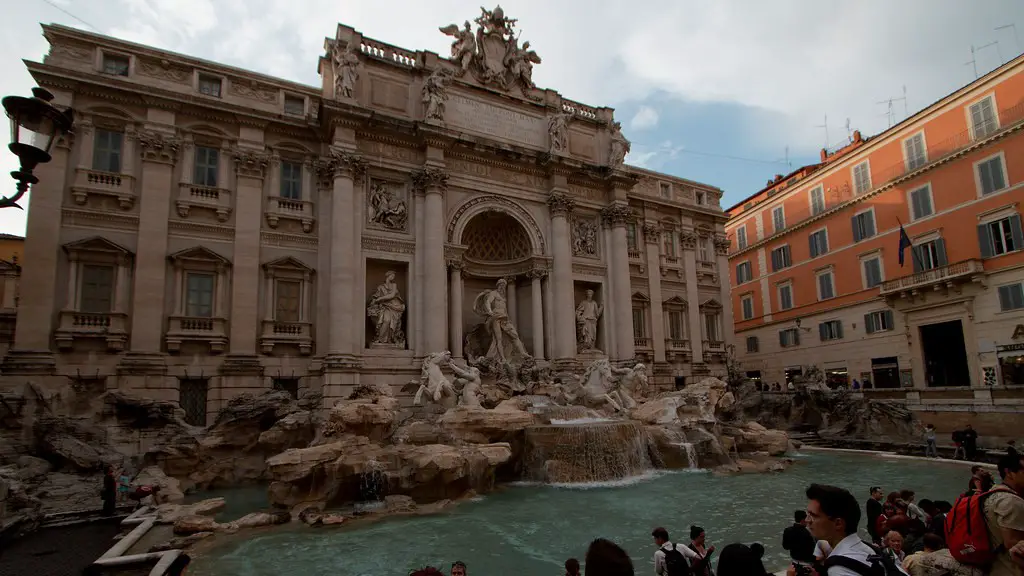Gladiator games in ancient Rome were a form of entertainment that spanned hundreds of years, stemming all the way back to 264BC, and were famous for their unyielding brutality. Historians believe that the concept of the gladiatorial games originated in the Etruscan peninsula and were adapted by the Romans. The games were a source of amusement for the aristocratic class and held in an arena known as a Colosseum.
At their peak the gladiatorial games were extremely popular and were believed to have drawn in large audiences from around the Roman Empire. This popularity was due to the ‘savage thrill’ that people found from watching the games and graphically described ancient accounts of the fighting and death. Furthermore, due to the presence of the emperor and other important figures, the games were seen as a powerful demonstration of Roman dominance and superiority.
Most gladiators were slaves who had no choice of their own but to fight, although some of them would have been freed slaves, who willingly signed up to the games. It is known that gladiator training was harsh and based on the primitive methods of the era. The myths of these men, many of whom were betrayed by stories of their courage and strength, still resonate powerfully in modern day tales of heroism.
For the spectators, bloody and potentially fatal struggles between men who had no hope of victory added to the excitement and tension. Spectators religiously believed in their fortune and the gods and would place bets on the gladiators in the arena, with some going as far as to pray for their chosen fighter to win.
The games were officially outlawed in the fifth century AD and called to a close as the Roman Empire was collapsing. The games were eventually forgotten, although many scholars believe that the concept has resurfaced in various forms in later entertainment such as sports, theatre and cinema.
Gladiators in Popular Culture
Modern day popular culture has often embraced the gladiatorial themes that were a part of ancient Rome. The popularity of the subject matter can be seen in the mass media, particularly film and television, which regularly depict scenes of Roman gladiatorial combat.
The famous movies Gladiator (2000) and Spartacus (1960) are important examples of gladiator culture in popular media as they portray ancient Roman culture and values in a fresh and exciting way. The gladiator figure has become a celebrated symbol of strength and bravery, some even considering him a real-life superhero.
The imagery of gladiatorial combat has been used to market many products, from clothing to financial products. The image of the gladiator has been used to represent strength, heroism, and perseverance and is seen as embodying classic values of resilience and courage.
Gladiator games have also continued to rouse the interest of modern-day sport fans. Tournaments such as the Ultimate Fighting Championship (UFC) and mixed martial arts (MMA) owe much to the influence of the gladiatorial games of Rome.
Controversy over Rome’s Gladiator Games
Like all forms of entertainment, the gladiatorial games were not without controversy. Critics accused the games of being a barbaric and savage form of entertainment, where human life was treated as cheap and expendable.
The games were depicted as cruel and inhumane, where innocent men were sent to their death for the amusement of an uncaring audience. It is believed that so many young men were sent to their deaths that the games were regarded as a form of human sacrifice.
The inhumane nature of the games also sparked many debates over their political implications. Was the emperor using the games to entertain and distract to retain power, or were they providing people with a necessary outlet? Were they a fair window into the changing Roman social structure or a means of widespread cruelty? These questions still remain difficult to answer today.
Conclusion of the Roman Gladiator Games
The last gladiatorial games were held in AD 404, when the Roman emperor Honorius declared that they should be abolished. Despite their cruel and violent nature, these games left an indelible mark on the Roman Empire and, ultimately, on the world.
Their myths and stories of courage, strength and honor are ones that still inspire us today, as gladiatorial combat lives on in modern forms of entertainment, from film and television to video games and martial arts tournaments.
The gladiatorial games may be gone, but the legacy of these ancient heroes lives on forever.
Popular Gladiatorial Fighters
Gladiators of ancient Rome were often celebrated and remembered for their skill in battle which saw them hero-worshipped almost as modern day sports stars. Two of the most famous gladiators who fought in the Colosseum and were a source of entertainment for the audiences were The Samnite and the Retiarius.
The Samnite was the most famous and feared of the gladiators and was known for its prowess with a shield and sword. Its fearsome combat skills saw it gain widespread fame throughout the empire. The Retiarius, on the other hand, was a relatively new style of combatant and was noted for its use of a trident and net. These gladiators were known for their unified style of combat, which contrasted with the more aggressive styles of earlier gladiators.
Both fighters became so popular in the Colosseum that their fights were often the highlight of the day. Spectators would place large bets on them and their fights became so popular that it was said the emperor himself witnessed some of their battles.
Exploitation of Gladiators in Ancient Rome
Aside from the fact that these games were a source of entertainment, they were also a way to keep the people of Rome in check and to display the power of the rulers. Gladiators were exploited and made to fight for the entertainment of the audience, often with no hope of survival.
Political intrigue and social unrest sometimes even made these games a tool of propaganda, as they were seen by rulers as a way to quell any rebellion or discord between the citizens of Rome.
The brutality and sheer spectacle of the Colosseum also gave a taste of the imperial power of Rome and made it much easier for the Caesars to keep the people in line and prevent any uprising.
The legacy of Gladiatorial Games
The legacy of gladiatorial games lives on to this day and it is impossible to ignore the immense impact that these combat events have had on the world. The harshness of these games may seem shocking by modern standards, but the bravery and courage of the participants are still remembered today.
The stories of these ancient heroes still inspire us to this day and their memory has transcended time. Even in the modern world, there is still a fascination with the gladiator games and the thrilling account of these ancient fighters pushes the limits of our imagination even today.





